
In our series, VillageLIFE, Janet-Lynn Vorster introduces us to the southern Cape Province of South Africa. In Part 1, we visit the Cape Peninsula – Gateway to the West Coast and the lower West Coast from Bloubergstrand to Yzerfontein (see below). In Part 2 we explore the West Coast Peninsula and the Cederberg West Coast. Enjoy South Africa!
Why travel to the Cape West Coast?
- The low-down: Exploring South Africa is one of those must do’s on everybody’s bucket list – for a good reason. The Cape is known for its beaches and fishing villages.
- The brightest highlight: The highlight of the lower West Coast must be the wide sandy beaches and the great west coast food!
- Intrepid destination: While some areas along the lower west coast is off the beaten track, the further north you travel the further away you get from the tourist trails.
- Globerovers score (10 is highest): While South Africa overall gets our 10 out of 10 score, the west coast should score even higher. This part of South Africa remains quite unspoiled and a gem to those who seek tranquillity.

Written by Janet-Lynn Vorster
Photos by GlobeRovers
Table of Contents
Cape Town to Bloubergstrand along the Cape West Coast
From Cape Town we will travel west, hugging the coastline where possible. After passing through a few suburbs to the west of Cape Town harbour, such as Paarden Eiland, Brooklyn, Milnerton and Sunset Beach, you will get to Bloubergstrand.
Blouberg translates as blue mountain, referring to Table Mountain which dominates the skyline in a shade of dark blue across the bay, which should by now be forever etched on your mind. If you look out to sea, historical Robben Island will be clearly visible (weather permitting, of course). Both Table Mountain and Robben Island are World Heritage Sites.
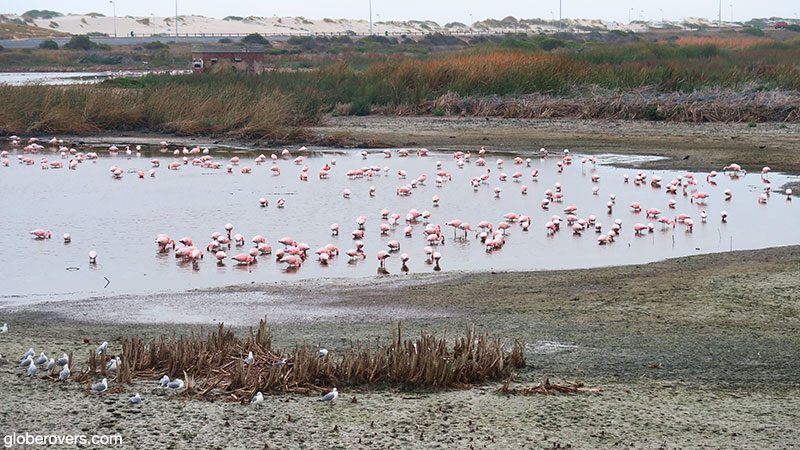
Bloubergstrand is a vibey area, with a long beach and many restaurants and places to stay. The best photographic views of Table Mountain are often taken from Bloubergstrand. The water is colder here than further east in Cape Town, and it can be very windy. However, this is exactly what makes it a favourite spot for kitesurfers and windsurfers. Watching them seemingly effortlessly go through their moves is an exhilarating experience which will keep your focus riveted on the ocean.
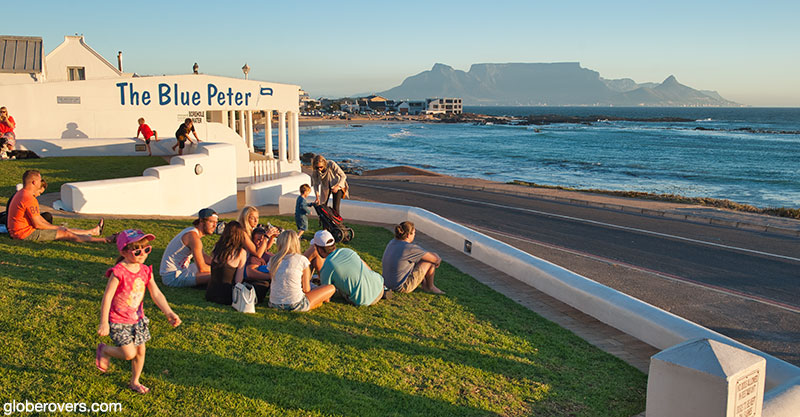
If you are passionate about exploring the wealth of fauna and flora in the area, Blaauwberg Nature Reserve has a rare combination of vegetation which is seldom found in one conservation area. Over 40 of its over 560 plant species are considered threatened with extinction. A variety of mammals, reptiles, amphibians and butterfly species have been identified at the reserve. Over 140 bird species are on record.
Sit on the lawn of the Blue Peter Hotel & Bar for a relaxing view of the sunset over Table Mountain.
Hungry or thirsty? Blue Peter and “Ons Huisie”, as it is now known, built prior to 1853 and declared a national monument in 1973, are two of the places I have personally visited in the area. Ons Huisie is virtually on the beach and serves delicious, traditional West Coast cuisine. It is also vegetarian-friendly and offers vegan options.
I recently met friends for a business coffee at Melissa’s in Blaauwberg Street, and I bought an olive bread, bacon jam and sour fig jam to take home with me. What a treat! Cape Sour Figs are indigenous to the coastal regions in the Western Cape. The plant produces a beautiful yellow flower that develops into edible sour fig fruit. The jam has a delicate tartness to it.

So, what is this sour fig really? Carpobrotus edulis is an easy-to-grow succulent groundcover, which grows wild along the sand dunes in the Cape. You will find them on the dunes in Bloubergstrand, with their yellow flowers. The sap in the leaves is anti-spasmodic, anti-septic, anti-fungal and more. Simply pick a leaf and chew a piece of it or rub it onto scratches or insect bites if you have nothing else at hand. They are great for bluebottle stings, so just crush the leaves and apply them to the site of the sting.
My herbal teacher always said that if we ever had to leave the planet and could take only one plant with us, it would have to be the sour fig. My gran used to cook jam for us as children, and we knew it by its local name, ghaukum.
Melkbosstrand
A little further along the coast, yet well within reach of Blouberg or Cape Town, you will reach Melkbosstrand. A beautiful cycling lane has been constructed between Bloubergstrand and Melkbosstrand, which was close to completion when I drove that road between the two towns very recently. So, rent a bicycle, and cycle along the coast. I measured the distance as almost seven-and-a-half kilometres from the last traffic circle in Bloubergstrand to the traffic circle in Melkbosstrand, where 500 m to your left you will locate the main beach. This is, like Bloubergstrand, a popular water sports beach.
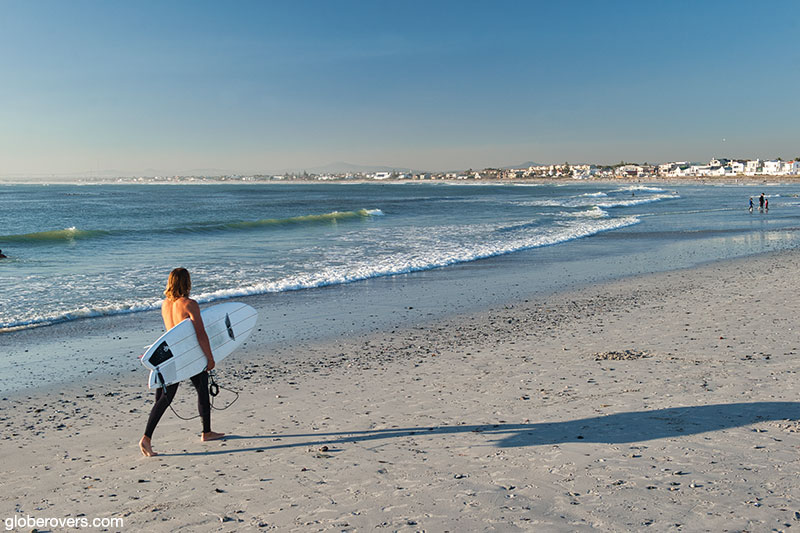
As you cycle along this road, you will find many beaches that are the playgrounds of kitesurfers in the area.
Melkbosstrand has a distinctly different feel to Bloubergstrand, providing a seaside holiday village experience with all amenities close by. In fact, you are still well within reach of anywhere in and around Cape Town if you choose to stay here and make this your base.
“Melkbos” refers to the Euphorbiaceae bushes which grow on sand dunes in the area.
If aviation excites you, a visit to the Air Force Museum will be right up your alley.
I can vouch for Café Orca on the beachfront. It is a fine-dining seafood restaurant situated in a cottage on the picturesque beachfront of Melkbosstrand.
Melkbosstrand is the entry point for South Africa’s undersea communications to Mauritius, India, Malaysia and the UK, with branches to more than 10 African west coast countries. Now you know it too!
For golfing enthusiasts, the Atlantic Beach Golf Course can be found at Melkbosstrand. It is one of South Africa’s premier 18-hole golf courses.
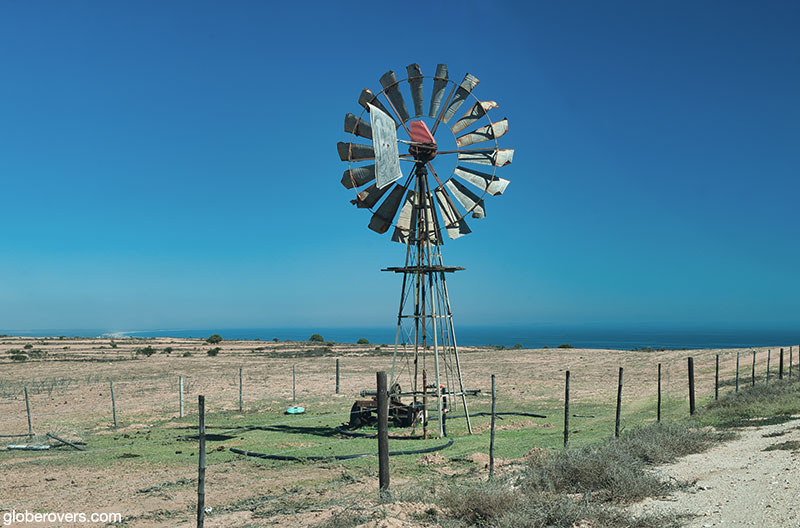
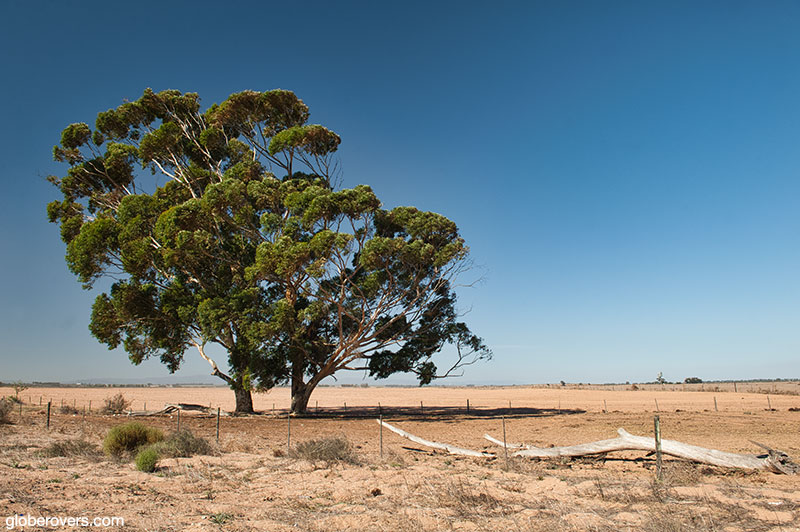
Yzerfontein in the Swartland
Leaving Bloubergstrand and Melkbosstrand behind you, take the R27 West Coast Road and travel about 58 km to Yzerfontein. This should take you about 40 minutes.
However, if you stop at the Westcoast Farm Stall it will take you considerably longer, but hey, you are on holiday, right? It is on the corner as you turn off the R27 to Yzerfontein. You can’t miss it with its brightly-coloured parrots painted on notice boards outside the farm stall. I was there when I went to find out more about Yzerfontein, and being over a weekend, they served a yummy buffet breakfast where you pay by weight, together with farm-baked bread. They serve traditional South African favourites such as oxtail, bobotie and tripe, and I plan on sampling those at the soonest opportunity.
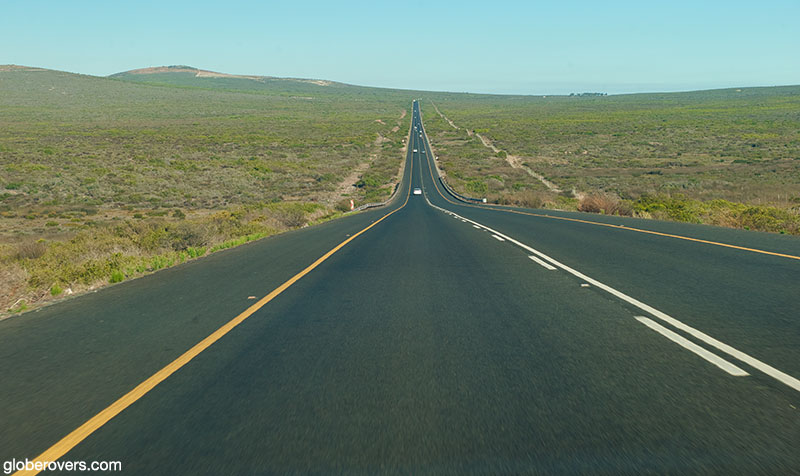
I just love the quirky crocheted curtains in the ladies’ loo and in the dining area together with the painted murals. If you enjoy knitting and crocheting like I do, and you are here to relax, this farm stall has a small but delightful selection of yarns, as does Periwinkles in Yzerfontein. Wander out through the back of the farm stall and you will find a delightful nursery and bird park with talking birds.
Darling – The Town
Close to Yzerfontein, you will locate the little town of Darling. It is inland, about 25 minutes’ drive (25,2 km) from Yzerfontein via the R315. Here you will find a lovely array of sights and places to tantalise the senses.
- Experience the tasting room at Darling Olives, with cheese, wine, marmalade and olive chocolate. The entire range of olive products is available for tasting during a 30-minute presentation.
- Visit the old Darling station, home of Pieter-Dirk Uys and “Evita se Perron”, meaning Evita’s platform, a cabaret theatre and restaurant.
- Go wine tasting on the Darling Wine Route.
- Visit the Darling Brew, a craft beer microbrewery. The tasting room is open to the public for an interactive tasting experience and boasts a locally-sourced braai-inspired menu. With its kiddies’ play area, it is a great place for the family to unwind
When returning to Yzerfontein from the wine- and beer tasting in Darling, you may not see pink elephants but ostriches strutting through the streets or your garden. Leave them alone and you will be fine. And no, you will not be “seeing things” or imagining it, so snap a few photos or nobody will ever let you live the story down.
Chasing Waves – Inspired by Surfer Stefan Pheiffer
What to do in Cape Town when the south-easterly wind is pumping insanely with speeds of around 55 km per hour?
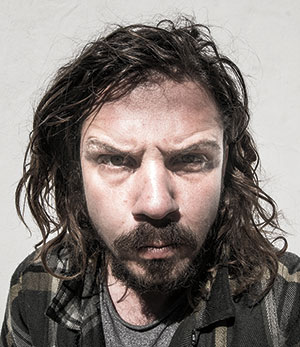
Head down to the beach of course! To kiteboard.
Stefan is not a kiteboarder, but a hardcore bodyboarder. However, in our most recent chat his exciting rendition of this crazy and fast adrenalin sport inspired me so much that I just had to find out more. I have since watched the guys (and gals) kiteboarding, and find it completely enthralling. It seems to me like a combo of kite flying, skiing and flying!
I met with Amber, to ask her how travellers can experience this popular Cape Town and West Coast sport. Amber provides tips, advice and information to travellers visiting Cape Town. When it comes to ocean sports around the Cape, Amber is well-informed.
To learn kitesurfing, Amber suggests booking three lessons over three days in Langebaan, 132 km from Cape Town via the R27. Langebaan lagoon has great wind, and is shallow without waves, which is the safest place for beginners to literally learn the ropes and find their feet.
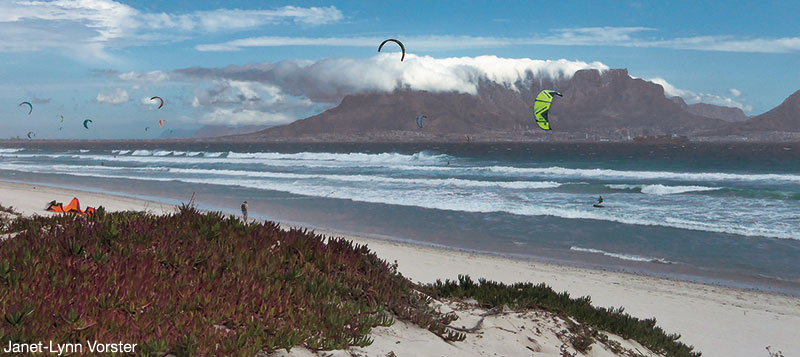
The lagoon is in close proximity to many kiteboarding schools. Lessons come with an instructor and kitesurfing equipment. Acquiring a kite and board and heading for the open sea without any experience is a very bad idea. Here is a guideline of what to expect from these lessons:
- Stand on the beach and get your kite airborne. Learn to play with the wind and to handle a kite.
- Get into the water, stand on the board, and at the same time get your kite into the air.
- Kiteboard across the lagoon, turn around and come back.
Once ready to kitesurf on your own, equipment can be rented or bought. Most people buy, and then sell it again before leaving. The equipment (not cheap) comprises a wetsuit, board, and various kites suited to different wind conditions.
☛ Read more: All the South Africa posts
Amber suggests progressing from the lagoon at Langebaan to Kite Beach between Sunset Beach and Big Bay in Blouberg. From here, once you have mastered these conditions, you can attempt the incredible windspeeds and gigantic waves at Witsand and Scarborough near Cape Point.
If it is a thrill you are seeking, make the waves in Cape Town your holiday playground.


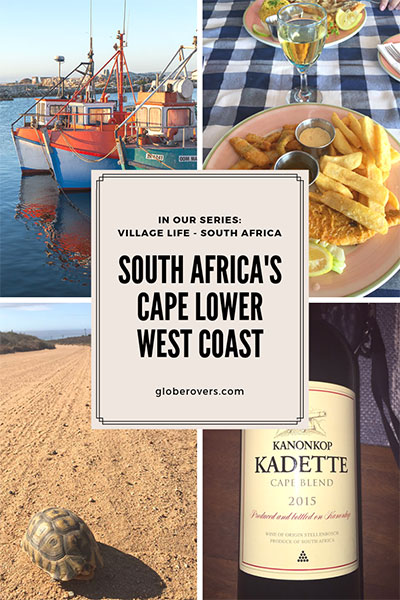
Further reading
- 19 of the most famous places to visit in South Africa
- 11 Top Things to Do Along South Africa’s West Coast
- West Coast road trips for any occasion
- An introduction to travelling South Africa
- The ultimate Cape Town travel guide
- How to visit Cape of Good Hope
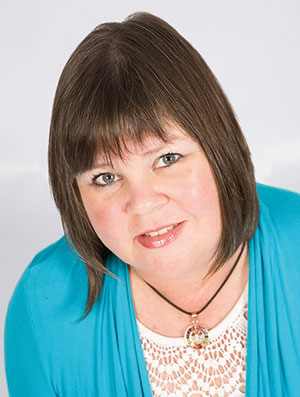
Janet-Lynn is a numerologist by profession, and journalist, editor and photographer by hobby. She is the proud mother of three grown children and granny to three grandchildren.
